The Sultanate of Brunei
The tiny South-East Asian country of Brunei Darussalam is tucked away on the island of Borneo, but despite its size is extremely wealthy due to its plentiful oil reserves. Darussalam in Arabic means ‘Abode of Peace’, and the oil fueled sultanate lives up to its name with low crime, high standards of living, and comprehensive state funded welfare benefits that include free healthcare, education and no income taxes for its citizens.
Brunei is a Malay Islamic Monarchy, and has been ruled over by the same dynasty for the past 600 years. The current Sultan Hassanah Bolkiah is one of the richest men in the world thanks to his oil greased deep pockets, and also one of the longest serving monarchs since his coronation in 1967. The well-liked monarch is known to love luxury vehicles, owns a fleet of high end supercars, and even pilots his own 747 jet. Oh, and gold, doesn’t the Sultan love gold! His well known penchant for gold is on display at the 2 main mosques in the city, on his gold plated Rolls Royce, in his 1800 room royal palace in Nurul Istana, and in the Royal Regalia museum.
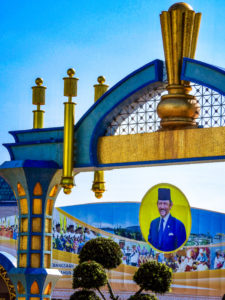
Sultan Hassanah Bolkiah’s presence is hard to miss in Brunei
Omar Ali Saifuddien Mosque
The capital city of Bandar Seri Begawan (or BSB to the locals) is easy to navigate and best explored by foot. First on my list of sights to explore was the Omar Ali Saifuddien Mosque, which was built in honor of the previous Sultan who is often called the Architect of modern Brunei. The iconic mosque is hard to miss with its distinct large gold dome and strikingly white minars that dominate the compact city center. It seemingly floats alongside a ceremonial stone barge on a man made lagoon/reflecting pool – a sight best experienced when the mosque is lit up at night. The prayer hall inside is also stunningly decorated with gold quranic inscriptions, intricate gold geometric patterns, and of course, sparkling golden chandeliers. The Sultan’s mark abides.
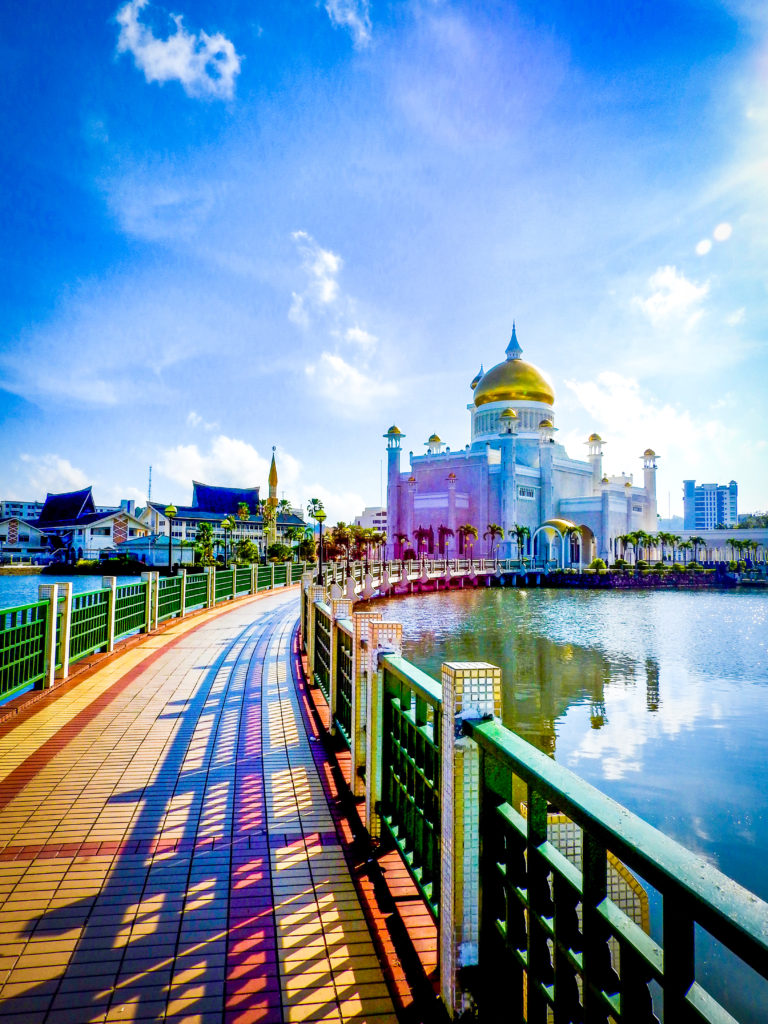
Omar Ali Saifuddien Mosque and its reflection pool
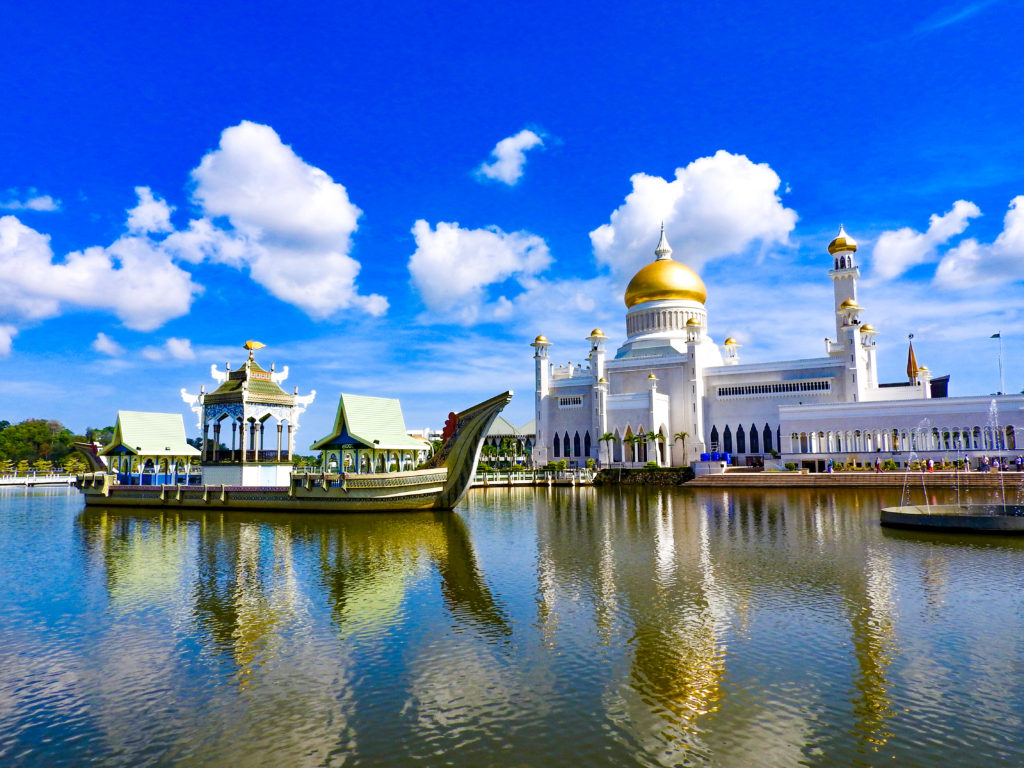
Omar Ali Saifuddien mosque and ceremonial stone barge
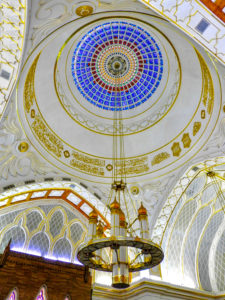
Ornately decorated prayer hall dome
Kampong Ayer water village
In sharp juxtaposition to the mosque’s beauty and riches, is Kampong Ayer, a water village on stilts that is situated just directly across the Brunei river. This collection of over 30,000 homes makes it the largest water village in the world. This is where half of the city’s residents lived before the oil appeared, and some still prefer these ramshackle homes on stilts and the river life to the modern replacements on land. I took a short speedboat ride on the river to get a closer look at the village and to see how these locals live on the water. Kampong Ayer has its own mosques, schools, hospitals, grocery stores, and even fire department. Many residents make the daily commute by speedboat to the mainland, then drive off in their luxury cars parks by the riverside.
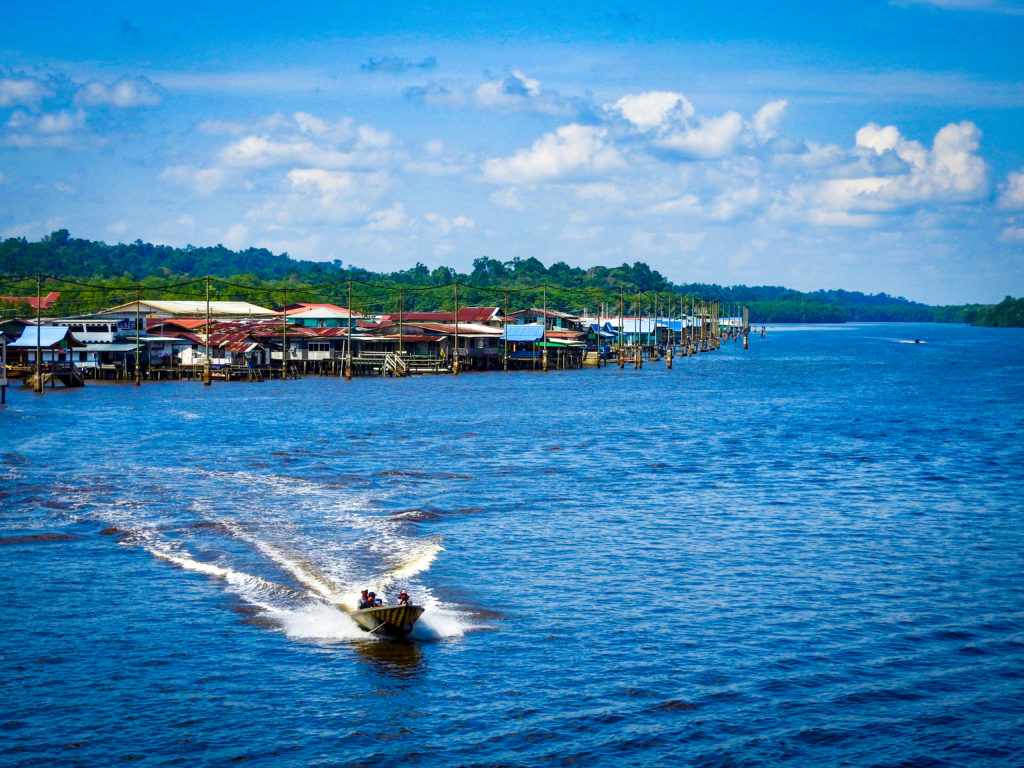
Speedboats ferrying locals and tourists across the river
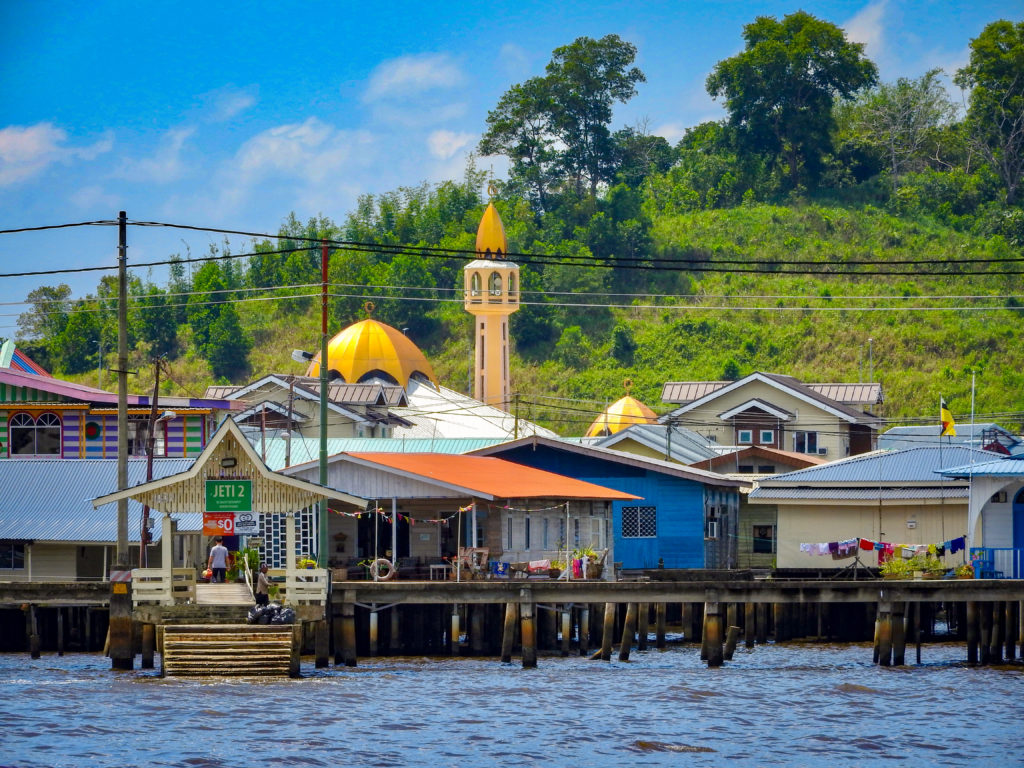
View of Kampong Ayer stilt houses
Taman Tasek nature park
The next morning, I headed out on a short hike to the nearby Taman Tasek park. Besides oil & gas, Brunei is well known for its pristine forests and lush greenery that is still very well preserved. This easily accessible park was teeming with locals on their morning exercise routines and I dutifully joined them along a well worn hiking path. The viewing tower at the top of the steep hike afforded me some expansive views of the green treetops and the golden domes from the city. On the way down I took a different route and was rewarded with views of a small waterfall.
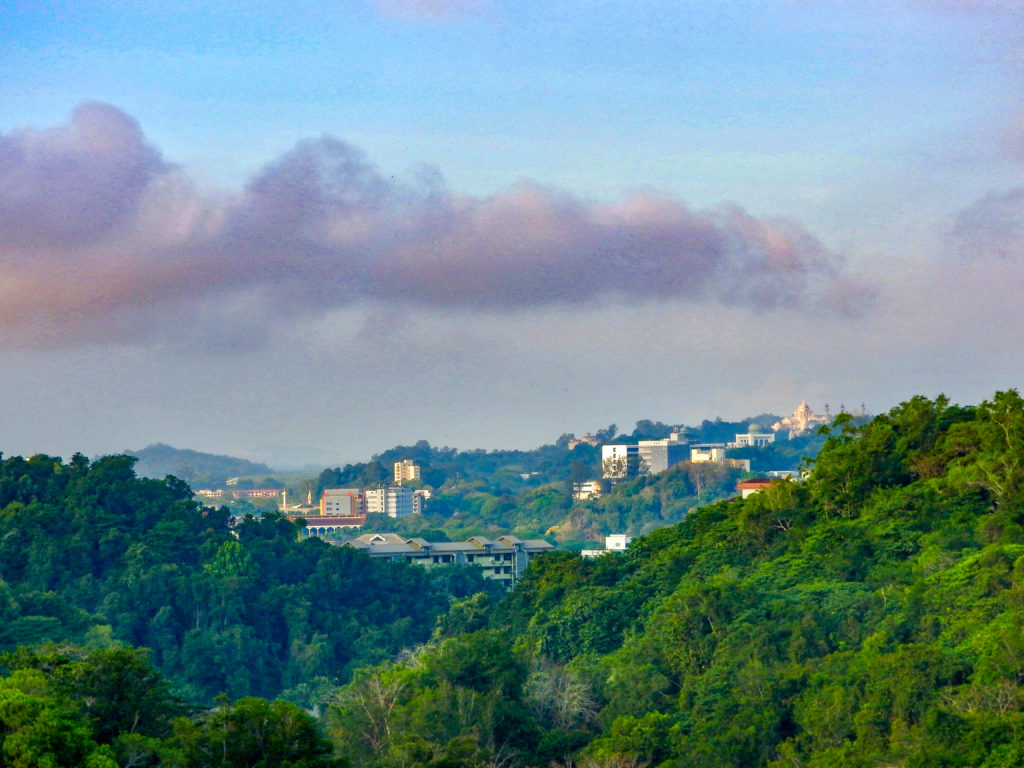
BSB from atop Taman Tasek park
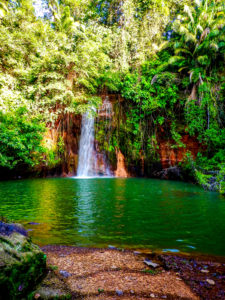
Chasing waterfalls in Taman Tasek park
Jame’Asr Hassanal Bolkiah mosque
Last stop on my trip was at the Jame’Asr Hassanal Bolkiah mosque. This is Brunei’s largest mosque and was was built to commemorates 25yrs of the current Sultan’s reign in 1992. The mosque is an epitome of Islamic architecture, with large gold topped domes, ornately tiled minarets that are incredibly detailed, and surrounded by sprawling landscaped gardens and fountains. The mosque has 29 domes in total to signify the current sultan who is the 29th ruler from his dynasty. After enjoying the outer facades of the mosque and clicking endless snaps, I made my way inside. The keen attention to detail was also evident on the interiors, especially in multi-colored stained glass ceiling, the incredibly delicate geometric designs that decorate the ceiling of the main dome, and the gold inlay-work on the main prayer wall.
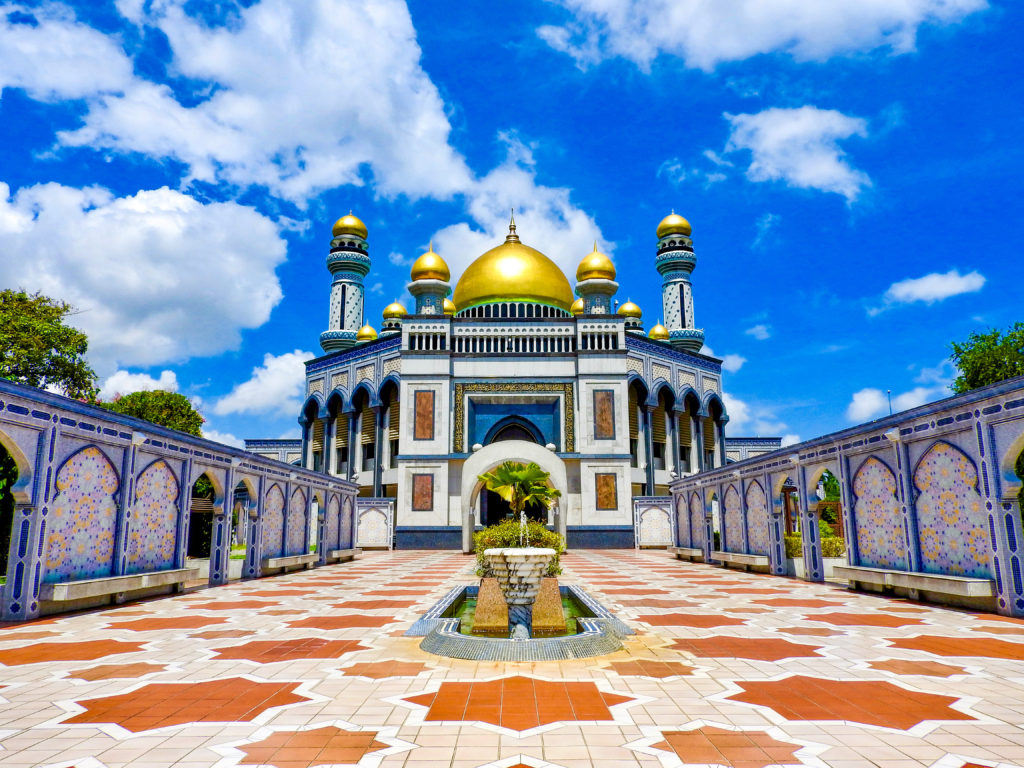
Stunning Jame’Asr Hassanal Bolkiah mosque
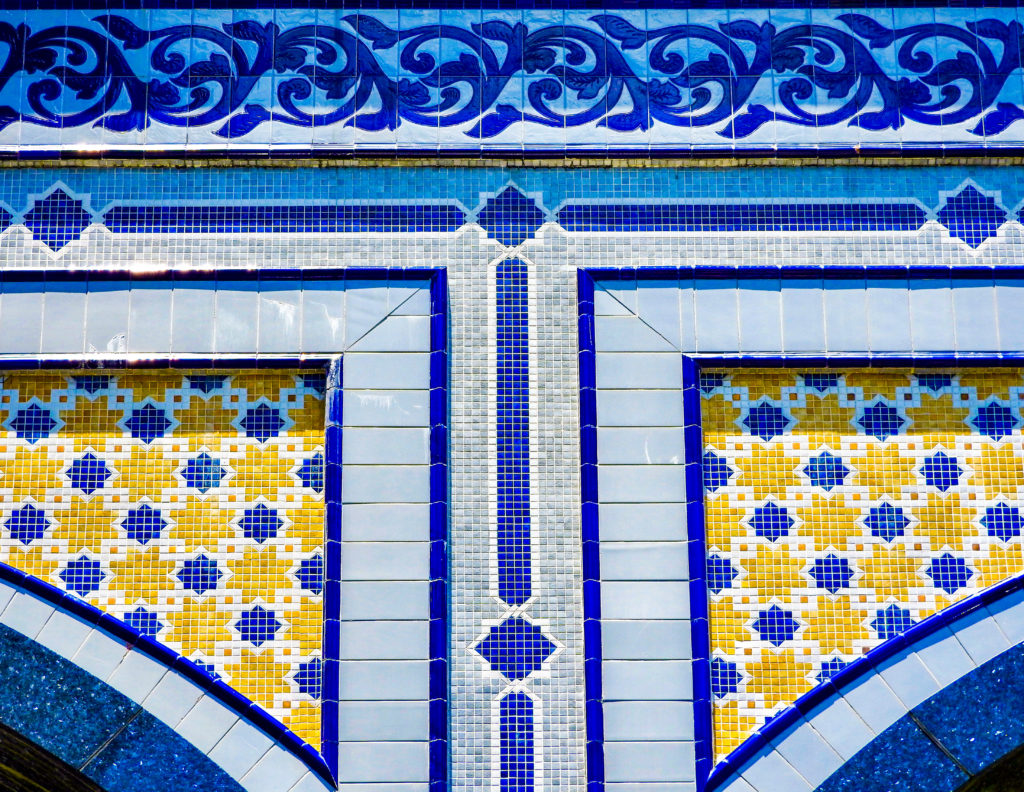
Intricate mosaic work all over the mosque’s facade
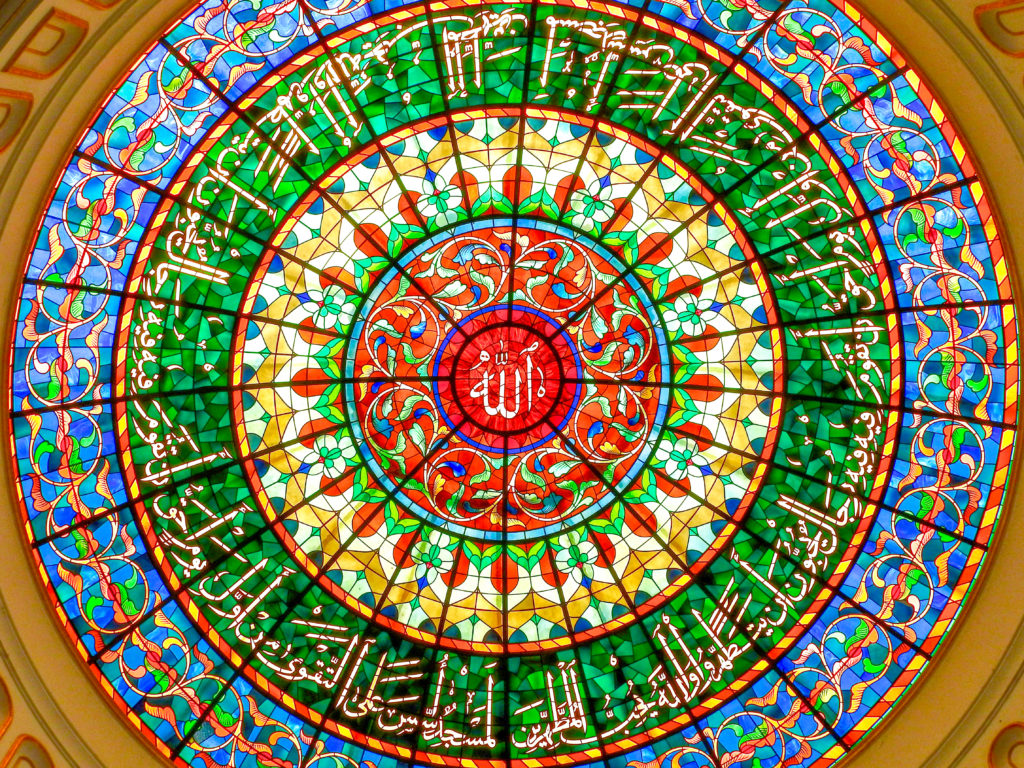
Colorful stained glass design of the central dome ceiling
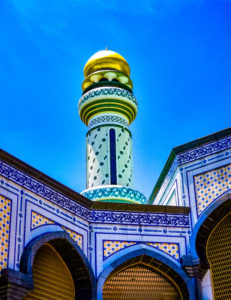
Gold foil topped minar tower
What to eat
Brunei’s population is two-thirds ethnic Malay, and the cuisine reflects that. Savoring popular dishes such as nasi lemak, roti cenai, and satay at the Tamu Selera hawker center reminded me of Singapore and Malaysian streetfood. For a local delicacy unique to Brunei, I tried a dish called Ambuyat. This dish is made from the sago palm and was developed back when starch choices were limited in the sultanate. I sampled the gooey jellylike dish and its accompanying tangy/spicy dip with a variety of side dishes such as fried dish, beef curry and mixed veggies. I was instinctively about to reach out for a beer, before ruefully recalling that Brunei is a strict Islamic country and alcohol is banned here. Sad face.
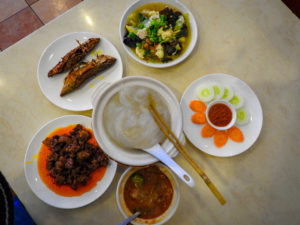
Ambuyat with condiments
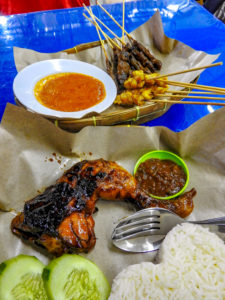
Nasi Lemak & Satay skewers
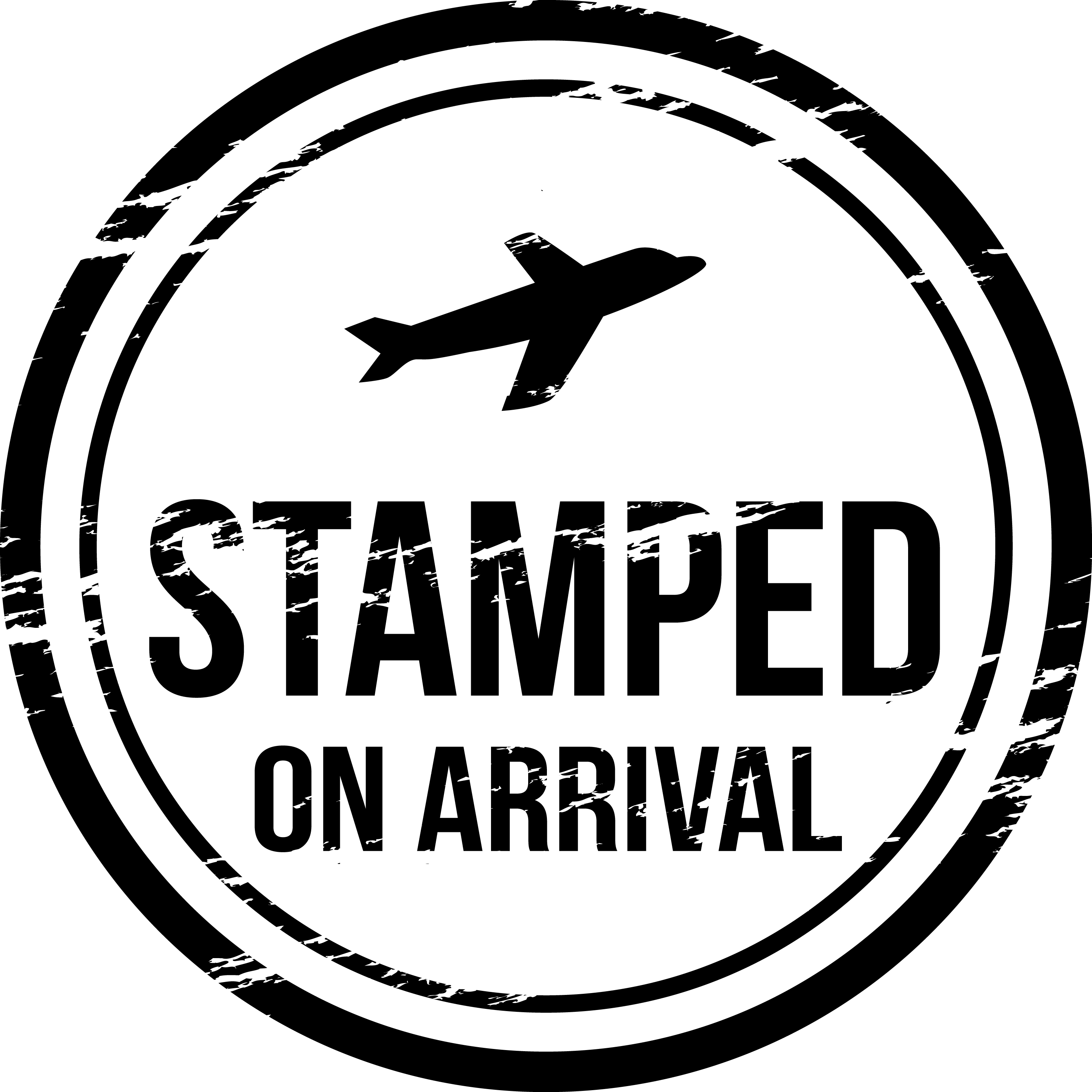
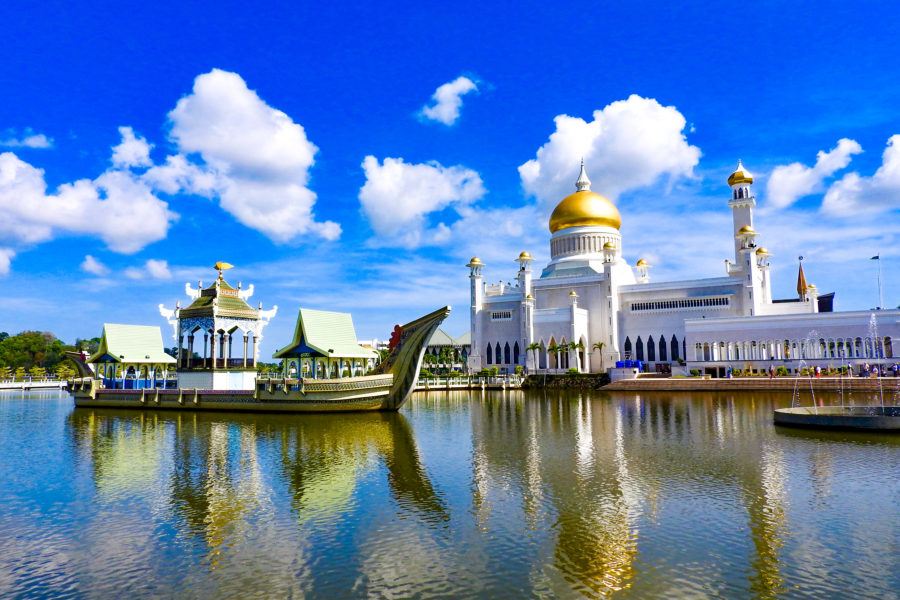
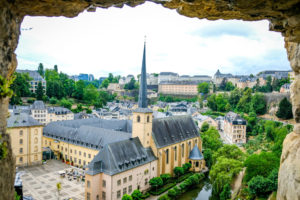
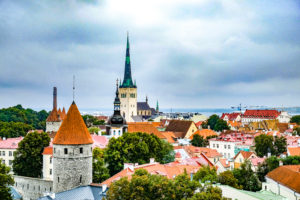
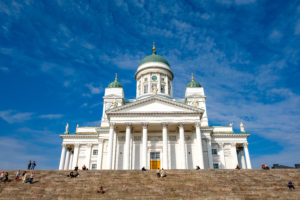




Leave a Reply
Please share your comments below!